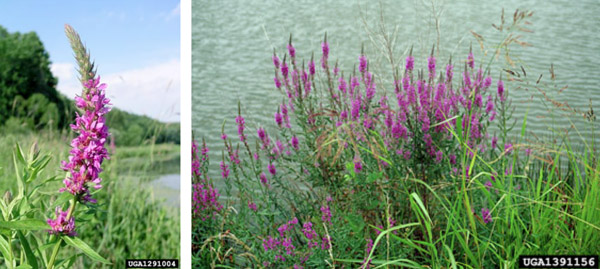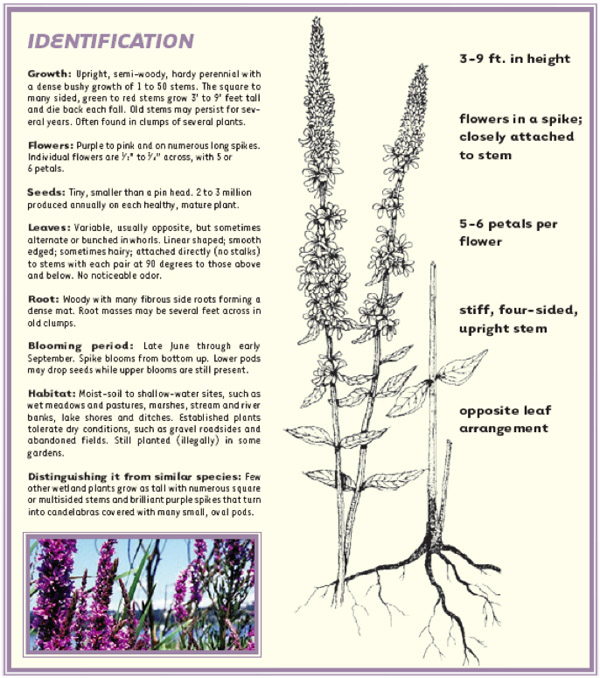Issue 9, June 18, 2010
Beautiful but Dangerous: What You Should Know About Purple Loosestrife
Purple loosestrife (Lythrum salicaria) has become a common sight in many places in the United States, including Illinois. This plant's prevalence and beautiful appearance causes many to write it off as a harmless wild flower. However, purple loosestrife is a very aggressive non-native plant that possesses a very real ecological and economic threat.

Photos courtesy of invasive.org
This plant was first brought over from Europe by settlers in the 1800s. It is a perennial and readily overruns wetland and lake shore ecosystems. Purple loosestrife replaces native plants and creates a dense and impenetrable stand of vegetation. Unlike native plants, purple loosestrife is not suitable as shelter, food, or nesting areas for native animals. This plant also overruns wild rice paddies and fish spawning grounds, some of which are used commercially. It has been estimated that purple loosestrife invades and degrades 190,000 hectares of wetlands, marshes, pastures, and riparian meadows in North America every year. The economic impact of this encroachment totals millions of dollars.
In order to control purple loosestrife, accurate identification is crucial. You can use the table below to identify and verify the presence of purple loosestrife. There are many native species that may be easily confused, such as fireweed, swamp loosestrife, winged loosestrife, and blue vervain. To see a comparison of these natives to purple loosestrife you can check out this online guide (Adobe PDF).

Figure courtesy of http://clean-water.uwex.edu
Once identified, there are different ways to control purple loosestrife. These methods vary based on the size of the infestation and include digging, hand pulling, cutting, chemical, and biological control methods. Even if removal is not an immediate option, cutting off the flowering spikes will prevent that season's seeds from spreading and increasing the infestation. This is particularly important because each plant can produce over 2 million seeds per year.
Identifying and controlling purple loosestrife infestations are crucial becase the habitats they degrade are not only of commercial value but are some of the most ecologically rich ecosystems in the United States. Despite this, there are still ornamental seed mixes that include this flower. So please keep your eyes out for purple loosestrife and help stop the infestation.--Irenka Carney
Author:
Irenka Carney